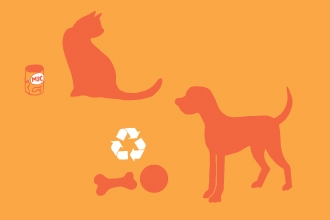Staffordshire Wildlife Trust encourages dog owners to consider the importance of keeping their pets on leads during visits to nature reserves and the wider countryside. This will help protect ground-nesting birds such as skylarks, lapwings, meadow pipits and nightjars, as well as other birds such as robins and dunnocks that nest close to the ground. Unsupervised dogs can unintentionally cause harm, so it is vital that they are kept under close control.
Springtime brings with it the arrival of many exciting migratory species of wildlife. Some which have travelled thousands of miles to nest at nature reserves in Staffordshire. Many of these birds nest on or close to the ground, where they're particularly vulnerable. Disturbance from dogs can lead to them abandoning their nests and losing their eggs or chicks. Some bird species are already struggling and disturbance by dogs can make it even harder for them to survive.




